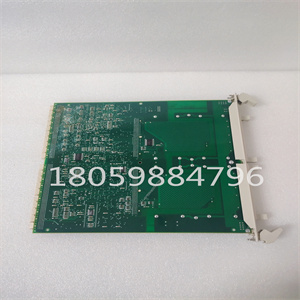DSQC354 机器人备件
IC6 RX3i以太网接口模块
IPI IC695ETM001-JX 2017年11月9日GFK-2332Z限制和开放问题限制和开放性问题主题描述统计的SRTP请求数可能不同。当运行多个SRTP客户端通道时,客户端和服务器报告的请求数可能会因连接而异。REPP不保存中止的PING结果Station Manager REPP命令不保留因错误而中止的PING结果。PING中止时会报告结果,但随后的REPP命令会给出上次成功终止的PING的结果。多个日志事件当发生单个错误情况时,Ethernet接口有时会生成多个异常日志事件和控制器故障表条目。在重复错误条件下,异常日志和/或控制器故障表可以完全填充重复错误消息。间歇性SNTP同步丢失在中等重的EGD流量负载下,Ethernet接口可能会偶尔与其SNTP时间服务器失去同步,并生成异常日志事件29H,条目2=000bH。SRTP通信延迟由于TCP重传,SRTP信道上通信的平均延迟可能会有很大变化。SRTP客户端应用程序的设计应考虑到这种差异。特别是,从90系列SRTP服务器迁移到PACSystems的SRTP客户端应用程序可能需要延长SRTP超时参数。假“以太网故障”错误在极少数情况下,以太网子板上可能会报告错误模块硬件故障。
异常日志中的相应故障
为Event=01H,随后是文本以太网故障。此故障是一个令人讨厌的故障,可以忽略。假以太网故障在极少数情况下,在断电后,以太网接口可能会记录以下故障,事件=28H,条目2=000eH。可以安全地忽略此故障。当无法在网络上定位远程设备时,意外的EGD COMMREQ状态EGD命令可能会返回COMMREQStatus 9590H(=内部错误),而不是预期的B190H(=无法定位远程节点)。SRTP服务器错误可能导致通道客户端超时。如果远程Series 90客户端断开SRTP连接,然后建立新连接,PACSystems Ethernet接口中的SRTP服务器可能会遇到各种错误。这可能导致客户端出现意外的通道超时错误0190H或0290H。以太网异常日志中的SRTP服务器错误被标识为Event=02H;条目2可以是001cH或0021H。EGD命令范围故障可能会将部分数据写入控制器位存储器当EGD命令尝试写入位模式参考存储器范围(%I、%Q;%T、%M、%SA、%SB、%SC)时,如果要写入的数据量超过了该参考存储器的配置大小,该命令将返回故障状态,但部分数据可能会写入参考存储器。写入的部分数据量取决于起始位存储器位置和数据长度,如下所示:▪ 如果数据
IC6 RX3i Ethernet interface module
IPI IC695ETM001-JX On November 9, 2017, the number of SRTP requests counted by GFK-2332Z restriction and open question restriction and open question topic description may be different. When running multiple SRTP client channels, the number of requests reported by the client and server may vary depending on the connection. REPP does not save aborted PING results The Station Manager REPP command does not retain aborted PING results due to errors. When PING is aborted, the results will be reported, but the subsequent REPP command will give the results of the last successfully terminated PING. Multiple log events When a single error occurs, the Ethernet Interface sometimes generates multiple exception log events and controller fault table entries. Under repeated error conditions, the exception log and/or the controller fault table can be fully populated with repeated error messages. Intermittent SNTP synchronization is lost under medium heavy EGD traffic load. The Ethernet interface may occasionally lose synchronization with its SNTP time server and generate an exception log event 29H, entry 2=000bH. SRTP communication delay Due to TCP retransmission, the average communication delay on the SRTP channel may vary greatly. SRTP client applications should be designed to take this difference into account. In particular, SRTP client applications that migrate from the Series 90 SRTP server to PACSystems may need to extend the SRTP timeout parameter. False "Ethernet fault" error In rare cases, the Ethernet sub board may report a hardware fault of the error module.
Corresponding faults in the exception log
Event=01H, followed by text Ethernet fault. This fault is a nuisance and can be ignored. False Ethernet fault In rare cases, the Ethernet interface may record the following faults after power failure, event=28H, entry 2=000eH. This fault can be safely ignored. When the remote device cannot be located on the network, the unexpected EGD COMMREQ status EGD command may return COMMREQStatus 9590H (=internal error) instead of the expected B190H (=the remote node cannot be located). SRTP server errors may cause channel clients to time out. If the remote Series 90 client disconnects the SRTP connection and then establishes a new connection, the SRTP server in the PACSystems Ethernet Interface may encounter various errors. This may cause an unexpected channel timeout error 0190H or 0290H on the client. The SRTP server error in the Ethernet exception log is identified as Event=02H; Entry 2 can be 001cH or 0021H. EGD command range failure may write some data to the controller bit memory. When the EGD command attempts to write to the bit mode reference memory range (% I,% Q;% T,% M,% SA,% SB,% SC), if the amount of data to be written exceeds the configured size of the reference memory, the command will return to the failure status, but some data may be written to the reference memory. The amount of partial data written depends on the starting bit memory location and data length, as shown below: ▪ If data











